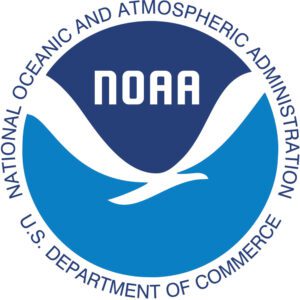 NOAA Fisheries has begun providing daily updates of ocean temperatures recorded during the eastern Bering Sea and northern Bering Sea bottom trawl surveys, with the primary goal being collecting data on the distribution and abundance of crab, groundfish and other bottom-dwelling species.
NOAA Fisheries has begun providing daily updates of ocean temperatures recorded during the eastern Bering Sea and northern Bering Sea bottom trawl surveys, with the primary goal being collecting data on the distribution and abundance of crab, groundfish and other bottom-dwelling species.
Other goals, according to NOAA, include monitoring the ecosystem and aiding in management of commercially important species in Alaska fisheries.
Information from the surveys could provide insight into whether there will be a cold pool in 2022, which is the natural barrier separating the biological community of the southeastern Bering Sea from the northern Bering Sea.
NOAA Fisheries is also offering daily updates on ocean temperatures from its Aleutian Islands bottom trawl survey.
The eastern Bering Sea bottom trawl survey is being conducted from May 25 through Aug. 2 and the northern Bering Sea bottom trawl survey from about Aug. 3-28. For this year, the start dates were staggered for the two vessels conducting the survey. The f/v Vesteraalen left Dutch Harbor on May 25, while the f/v Alaska Knight left Dutch Harbor on May 26.
Due to concerns about the ongoing global COVID-19 pandemic, port calls were minimized, according to NOAA.
NOAA Fisheries said once the eastern Bering Sea survey was completed, it would move northward to conduct a full survey of the northern Bering Sea bottom-dwelling species. Additional surveys are planned in the northern Bering Sea using surface trawls and hydro-acoustics to monitor key components of the marine ecosystem and environmental conditions.
For the safety of survey teams and vessel crews, as well as communities, NOAA has canceled outreach events typically associated with port calls during the survey. Still, the intent is to provide regular survey updates on water temperatures collected near the seafloor at all survey stations.
The cold pool is a natural, thermal barrier created by winter sea ice that persists throughout the subsequent summer across the eastern and northern Bering Sea shelf. It’s comprised of water with temperatures below 2°C. Increased cold pool coverage in 2020-2021 follows the record low coverage observed in 2017-2019. At that time fish distribution patterns changed greatly, with new significant proportions of the walleye Pollock and Pacific cod stocks observed in the northern Bering Sea.
More information about the cold pool and details on how timing effects may influence the mean temperature results are online at fisheries.noaa.gov.
The final, validated survey data, including temperature and species collected at each station, is expected to be made accessible about a month after the survey’s completion on the Fisheries One Stop Shop (FOSS) platform, www.fisheries.noaa.gov/foss/.
The goal of the 2022 Aleutian Islands bottom trawl survey also is to collect data on distribution and abundance of crab, groundfish and other species on the bottom of the ocean in the Aleutian Islands. NOAA Fisheries has conducted this survey since 1980, except in 2008 and 2020, and the survey was formally standardized in 1991.
Collecting environmental data during the survey helps NOAA better understand habitats of various organisms and the greater ecosystem. NOAA biologists note that water temperature is critical to many species, as it affects their spawning times, access to food, growth rates and their overall distribution patterns.
The survey is being conducted from June 6 though Aug. 18, with dates staggered for the f/v Ocean Explorer, which left Dutch Harbor on June 10, and the f/v Alaska Provider, which departed Dutch Harbor on June 11. For this survey, due to pandemic-related concerns, NOAA has said that port calls and outreach are being minimized for the safety of survey teams, vessel crews and communities.
Final validated survey data was to be made accessible about a month after the survey was completed, at Fisheries One Stop Shop (FOSS), www.fisheries.noaa.gov/foss .
